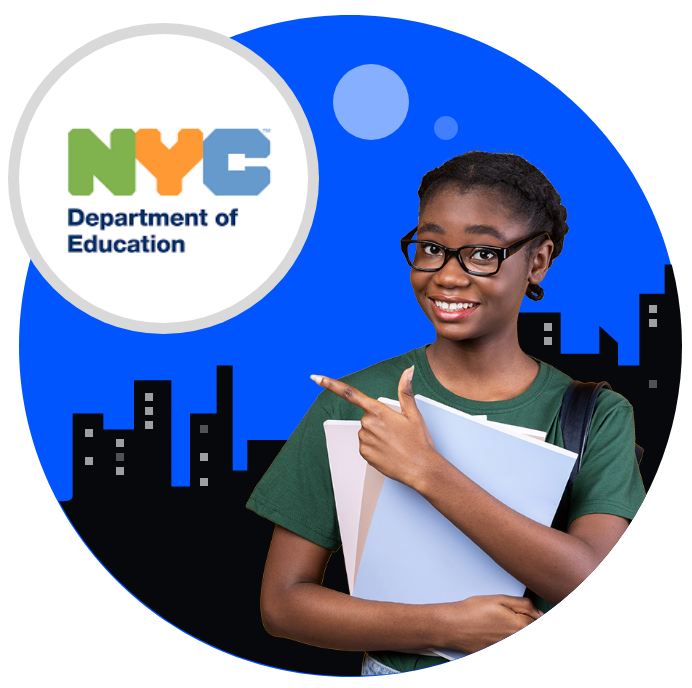Overview
Client
The New York City Department of Education’s Students in Temporary Housing (STH) Program supports students who are homeless or living in temporary housing. It ensures these students have access to educational resources and services comparable to their peers. The program provides resources such as transportation, tutoring, counseling, and school supplies. STH liaisons work in schools and shelters to help families navigate the education system, ensuring that children continue their education without disruption despite housing instability.
Opportunity
FuseChange, a 501(c)3 nonprofit focused on accelerating social change through open-source technologies, partnered with the NYC DOE to address the inefficiencies in managing and supporting homeless students. This partnership aimed to streamline processes and improve resource allocation through innovative technological solutions.
Problem
The NYC DOE is the largest school district in the United States, committed to providing quality education to over a million students. Among these students, 1 in 10 are homeless or living in temporary housing. The DOE invests $60 million annually in the Students in Temporary Housing (STH) program, supported by over 350 DOE employees, to ensure that homeless students have equal access to education and necessary resources.
The existing case management system for the STH program was highly inefficient, relying heavily on paper-based processes and outdated computer systems. Key student data was dispersed across 200 homeless shelters in physical binders, leading to delays in connecting students with necessary resources. This manual, fragmented system negatively impacted the ability of the STH team to provide timely support to homeless students.
Solution
FuseChange, with funding from the Deutsche Bank Foundation of America and support from Microsoft technologies, developed the SMART (Students Making a Real Transition) prototype application. This modern, data-driven case management system aimed to:
1. Eliminate paper-based processes and automate solutions.
2. Integrate systems across government and social service providers.
3. Facilitate organizational collaboration for resource coordination.
4. Track and direct McKinney-Vento Act funding effectively.
5. Provide an open-source platform accessible to school districts nationwide.
Results
Provided guidance to support the district in thinking our a more inclusive and holistic solutions to support:
1. Digital record-keeping, replacing paper-based systems.
2. Enhanced communication and data sharing between the DOE, city departments, and nonprofit partners.
3. Improved coordination of social services, ensuring timely support for students.
4. Efficient tracking and utilization of McKinney-Vento Act funding.
Goals
1. Eliminate paper-based processes with a modern data-driven case management system so schools can move away from manual processes and embrace automated solutions.
2. Establish system integrations across government and social service providers in local communities so that homeless data systems can communicate easily.
3. Enable cross-organizational collaboration to coordinate social service resources across local organizations working to address youth homelessness.
4. Target McKinney-Vento funding to be directed to specific student needs, working to ensure millions of federal funding is spent appropriately.
Build it open source and make it available to any school as a nationally scalable platform at fractions of the cost.
Our Assumptions
ONE. We believe other districts across the U.S. are experiencing a similar challenge.
TWO. Support for youth living in temporary housing is more critical and challenging than it has ever been before.
THREE. The systems that facilitate support to homeless students are not optimized, requiring new innovation and change.
FOUR. Schools have limited resources to invest in technology that could ultimately improve the situation.
FIVE. The homeless epidemic is not shrinking, it’s growing in almost every city we talk to.
Our Theory
The door is open and everyone knows we need to tackle homelessness. In cities across the country we see it’s exponential growth, we have limited resources, finite time, and were doing what we can to push the limits.
It’s going to take a new level of collaboration and coordination that we can’t see right now. One that interconnects and coordinates social services inside cities and across cities, weaving impact. A solution that will be owned by the districts that wants to participate vs hundreds of siloed, costly, and segmented systems.
Our theory. There are strategists and thought leaders who see past the impossible and realize the opportunity we have to make a systems change. Together, we can facilitate this change.
Who are we?
We are a 501(c)3 nonprofit, on a mission to accelerate social change with open-source technologies that bring communities together to collaborate on pressing social issues. Learn More
Contact: collaborate@fusechange.org
Make a Donation
Ethereum
Donations

